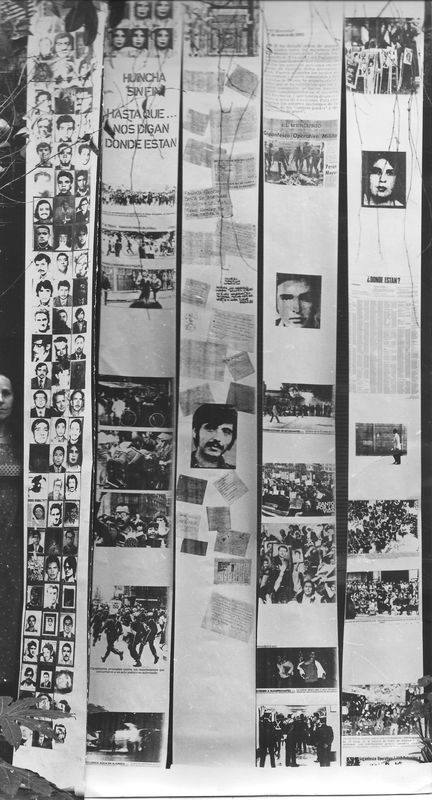
Luz Donoso, Artist
Huincha sin fin (Endless band)
, 1978
Portraits of the disappeared played an important role in the works of the Chilean artist Luz Donoso. In Huincha sin fin, Donoso made use of the photocopy machine to produce long, narrow sheets of paper that showed multiple portraits of the disappeared alongside the repeated phrase "Where are they?" The sheets were displayed like hanging scrolls or installed along a staircase. Huincha is a word of Quechua origin that refers to a band to be tied to the head or used for measurement. Both meanings are at play in these reproducible and inexpensive editions that gather the faces of the disappeared and the demands of their relatives. These endless bands are a living archive that can be adapted to different spaces. The intention, in Donoso's own words, was to compile them "until we are told where they are."
Los retratos de los desaparecidos jugaron un papel importante en la obra de la artista chilena Luz Donoso. En Huincha sin fin Donoso recurrió a la fotocopia para multiplicar los retratos de los desaparecidos con la frase repetida "¿Dónde están?". Dispuso los retratos en extensas bandas de papel que eran exhibidas colgando o adheridas a los peldaños de escaleras. "Huincha" es una palabra de origen quechua que significa cinta para atarse la cabeza o para medir. Las dos acepciones funcionan para estas ediciones económicas, reproducibles, en las que se acumulan los rostros y los reclamos de los familiares. Estas cintas sin fin son un archivo vivo, que se adapta a distintos espacios, y que se compila con la intención de no detenerse "hasta que nos digan donde están…", en palabras de la propia Donoso.


